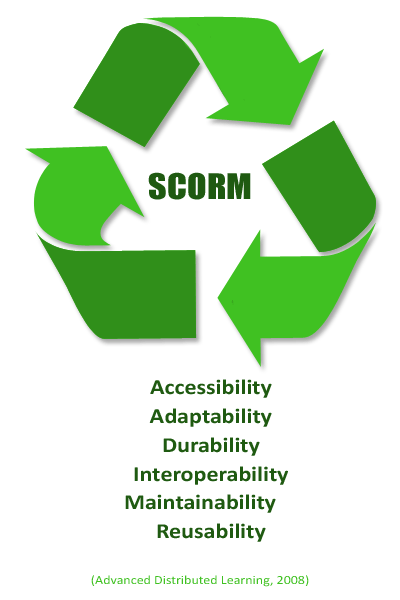SCORM Goes Green...

The following is an article I contributed for my most recent course - Learning Management Systems and Organizations.
"Going Green" is a phrase traditionally associated with the environmentalist movement toward the conservation and sustainability of the Earth's natural resources. Recycling and repurposing these resources is one of the guiding principles behind this movement. The value of recycling lies in its ability to prevent waste.
Much like recycling a soda can prevents the depletion of aluminum resources and the accumulation of waste in a landfill, applying standards to the creation and packaging of educational content allows the reuse of that content and eliminates the need to recreate the same lesson across multiple platforms.
The implementation guidelines outlined in Advanced Distributed Learning's (ADL) Sharable Content Object Reference Model (SCORM) is a green movement within the ecosystem of e-learning. SCORM allows for the standardization of e-learning content development and deployment, therefore promoting the reuse of that content. Such a model helps conserve valuable human and financial resources by eliminating wasteful duplicate efforts. Rustici notes, "ADL didn’t start off to create an entire market ecosystem for e-learning, they started by trying to save the government money. Their original vision was to enable content to be reused . . ." (para. 6).
SCORM guidelines provide a common language for communication between e-learning content and various Learning Management Systems (LMS) through the design, organization and packaging of Sharable Content Objects (SCO). SCO allow for the modularization of e-learning content, the aggregation of which can be adapted or customized to the needs of individual learners.
Just as the environmentalist green movement campaigns for the conservation and the sustainability of valuable resources, so does ADL's SCORM model through the recycling of SCOs and the elimination of wasteful duplicative effort and spending.